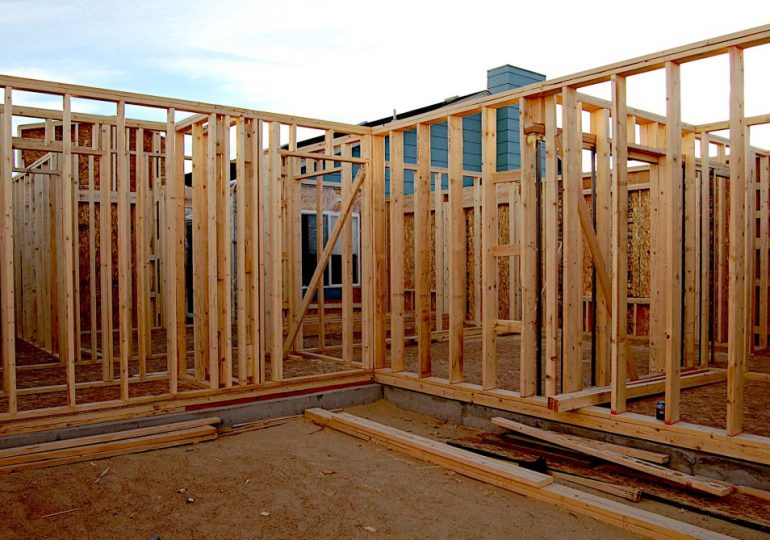Even as North Carolina continues to weaken its building energy conservation codes, a new federal rule is poised to spur the construction of thousands of energy-efficient starter homes in the state each year.
Adopted earlier this spring, the measure requires homes with certain federally-backed mortgages to meet the latest guidance for insulation thickness, window quality, and other energy-saving features — a major improvement over the state’s 2009-era floor for new residential construction.
The rule is expected to impact more than 1 in 10 new home sales in North Carolina, mostly by lower-income and first-time homebuyers. Government studies show they will pay more for improved efficiency but reap immediate cash-flow benefits from lower monthly utility bills.
“The requirements are essential for protecting low-income homebuyers and renters,” said Lowell Ungar, federal policy director of the American Council for an Energy-Efficient Economy, “lowering their energy bills, giving them more comfortable and healthier homes, and protecting them in the climate transition.”
The impact extends beyond North Carolina and will lift standards in several states where lawmakers and industry lobbyists have pushed back against energy-saving building code updates.
Ungar and his colleagues are also working to extend the requirements to the independent regulator of Fannie Mae and Freddie Mac. If they succeed, a large majority of new homes in North Carolina could be built to modern energy-savings standards — even though a 2023 state law prevents any major code updates until the next decade.
Rob Howard, who builds sustainable homes in the state’s foothills, fought against the law and now serves on the state’s Building Code Council.
“It’s the first feeling of hope that I’ve had for North Carolina since last year,” he said.
Homebuilders block local improvements
Reducing energy waste in buildings is a critical component of the clean energy transition. The most cost-effective way to do so is at the point of construction, especially in rapidly-growing North Carolina, where some 90,000 new homes are built each year, about two-thirds of them single-family units.
Yet the powerful home construction lobby has long resisted stronger requirements for energy-saving features in residential construction, influencing the state legislature, where it is a major campaign donor, and until recently, the state’s Building Code Council, a citizen commission.
Thus, while model codes are updated every three years, North Carolina’s rules remain outdated. Though the council was poised last year to bring the code in line with 2021 guidelines, lawmakers backed by developers intervened to circumvent the update, overriding a veto from Gov. Roy Cooper, a Democrat.
This year, the Republican-led legislature relaxed insulation requirements and made other changes to the building code that many experts, including the state fire marshals’ association, argued would make homes less safe. Again, Cooper vetoed the measure, and in a vote last week, lawmakers overrode him.
“The General Assembly has let the homebuilding industry make a quick buck at the expense of North Carolina families who will pay more every month in home energy costs,” Drew Ball, Southeast campaigns director at Natural Resources Defense Council, said in a statement after the vote. “This law rolls back North Carolina’s energy building codes and passes the costs on to consumers.”
‘Let’s set the bar as high as possible’
But state building codes aren’t the only policies that can influence home construction.
The federal government plays a huge role in promoting homeownership by guaranteeing loans for borrowers who can only make a small down payment or may otherwise risk default.
In 2007, a sweeping energy law adopted under the George W. Bush administration required any new home purchased with backing from the Department of Housing and Urban Development or the Department of Agriculture to meet the latest model code for energy efficiency.
It wasn’t until 2015 that the Obama administration tied the loans to the 2009 model energy efficiency code. The Trump administration took no action.
The Biden-Harris administration picked up the torch last year, beginning an examination to make sure the latest model codes would bring more benefits than costs. In May of this year, officials concluded that the 2021 standards wouldn’t negatively affect the affordability and availability of housing.
“As a result of the updated energy standards, energy efficiency improvements of 37% will cut energy costs by more than $950 per year, saving homeowners tens of thousands of dollars over the lifetime of the home,” a press release from the Department of Housing and Urban Development said.
Similarly, last year an independent government lab found that the more stringent standards will add about $5,000 to the cost of the average North Carolina home, but generate a positive monthly cash flow instantly in the form of lower utility bills.
About 1 in 10 new single-family home loans per year are backed by the Department of Housing and Urban Development or the Department of Agriculture, according to the federal officials.
The Department of Veterans Affairs must update its lending rules to match those of HUD and USDA, impacting another 3% to 5% of newly built homes, Ungar estimates.
Howard, who’s building a small collection of super-efficient homes in Granite Falls, says just one of the 11 cottages so far is being financed with a loan that would be affected by the new rule.
“As a small builder who’s focused on attainable housing, I’m going to assume that a certain percentage of my buyers will qualify for the USDA loan programs,” he said. “And so of course, I want them to have the ability to participate in those. But I’ve already made the decision to build to zero-energy ready, which is currently based on the 2021 [model code]. I’m already there.”
The bigger impact of the new rule will be on large, multi-state, multi-regional builders who focus on starter homes, Howard said. “Those kinds of builders don’t want two different levels that they’re building to. They would rather have one that simplifies their entire construction process.”
With the new rule, then, builders can either adhere to the latest energy efficiency standards so that potential buyers can qualify for federal backing on their loans — or not.
“Let’s set the bar as high as possible,” said Howard, “and then builders get to choose.”
If multi-state builders choose to build all of their homes to the 2021 model code, the rule’s impact could extend beyond the roughly 15% of new stock estimated by government officials and advocates.
‘A much broader impact’
If advocates succeed in getting the Federal Housing Finance Agency, the regulator of Fannie and Freddie, to adopt the same standards, the effect would be even greater: the two companies ultimately end up buying over half of mortgages in the country.
“Now you’re talking about 70% of the loans in this country,” Howard said. “So that’s obviously a much broader impact.”
As they have in North Carolina, the national builder lobby claims the energy efficiency standards will add tens of thousands of dollars to construction costs. They oppose the rule that’s already finalized for the Departments of Agriculture, Housing and Urban Development, and Veterans Affairs, and they object to extending the requirements to Fannie and Freddie.
“If Fannie and Freddie were forced to comply with the 2021… mandate,” Missouri builder Shawn Woods told Congress this spring, “this would become a de facto national standard and be a massive blow to housing affordability.”
Unless Republican presidential nominee Donald Trump wins this November, the finalized rule is safe for now, advocates believe. As for the broader requirements on Fannie and Freddie, the director of the Federal Housing Finance Agency said it would study the matter and issue a decision by the end of June.
“Obviously, they did not do that,” Ungar said.
Even with N.C.’s building code frozen, federal rule poised to boost energy-efficient housing in the state is an article from Energy News Network, a nonprofit news service covering the clean energy transition. If you would like to support us please make a donation.
Leave a comment




